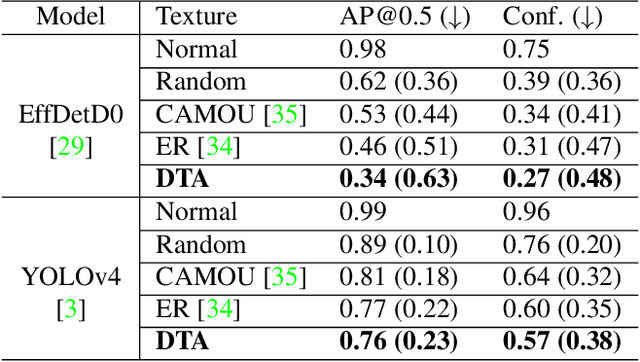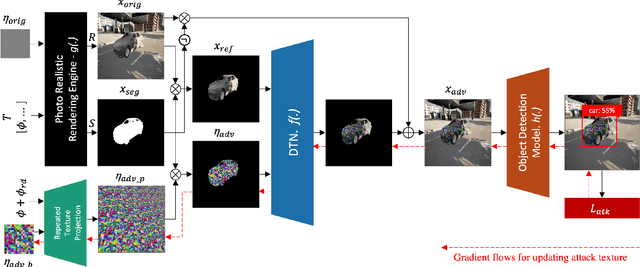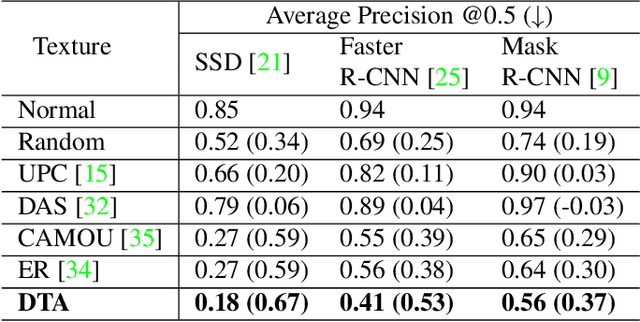Harashta Tatimma Larasati
ACTIVE: Towards Highly Transferable 3D Physical Camouflage for Universal and Robust Vehicle Evasion
Aug 16, 2023



Abstract:Adversarial camouflage has garnered attention for its ability to attack object detectors from any viewpoint by covering the entire object's surface. However, universality and robustness in existing methods often fall short as the transferability aspect is often overlooked, thus restricting their application only to a specific target with limited performance. To address these challenges, we present Adversarial Camouflage for Transferable and Intensive Vehicle Evasion (ACTIVE), a state-of-the-art physical camouflage attack framework designed to generate universal and robust adversarial camouflage capable of concealing any 3D vehicle from detectors. Our framework incorporates innovative techniques to enhance universality and robustness, including a refined texture rendering that enables common texture application to different vehicles without being constrained to a specific texture map, a novel stealth loss that renders the vehicle undetectable, and a smooth and camouflage loss to enhance the naturalness of the adversarial camouflage. Our extensive experiments on 15 different models show that ACTIVE consistently outperforms existing works on various public detectors, including the latest YOLOv7. Notably, our universality evaluations reveal promising transferability to other vehicle classes, tasks (segmentation models), and the real world, not just other vehicles.
DTA: Physical Camouflage Attacks using Differentiable Transformation Network
Mar 18, 2022



Abstract:To perform adversarial attacks in the physical world, many studies have proposed adversarial camouflage, a method to hide a target object by applying camouflage patterns on 3D object surfaces. For obtaining optimal physical adversarial camouflage, previous studies have utilized the so-called neural renderer, as it supports differentiability. However, existing neural renderers cannot fully represent various real-world transformations due to a lack of control of scene parameters compared to the legacy photo-realistic renderers. In this paper, we propose the Differentiable Transformation Attack (DTA), a framework for generating a robust physical adversarial pattern on a target object to camouflage it against object detection models with a wide range of transformations. It utilizes our novel Differentiable Transformation Network (DTN), which learns the expected transformation of a rendered object when the texture is changed while preserving the original properties of the target object. Using our attack framework, an adversary can gain both the advantages of the legacy photo-realistic renderers including various physical-world transformations and the benefit of white-box access by offering differentiability. Our experiments show that our camouflaged 3D vehicles can successfully evade state-of-the-art object detection models in the photo-realistic environment (i.e., CARLA on Unreal Engine). Furthermore, our demonstration on a scaled Tesla Model 3 proves the applicability and transferability of our method to the real world.
 Add to Chrome
Add to Chrome Add to Firefox
Add to Firefox Add to Edge
Add to Edge